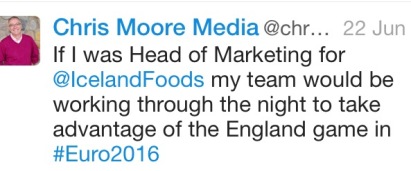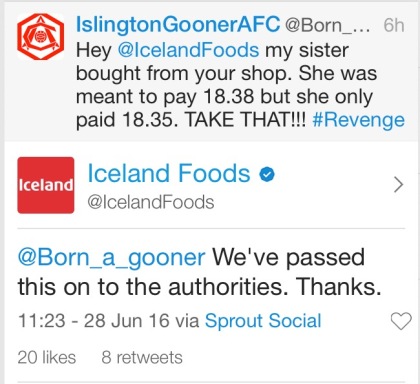
Let’s start this time with some statistics:-
Social networks earned an estimated $8.3 billion from advertising in 2015
38% of organizations spent more than 20% of their total advertising budgets on Social Media channels in 2015, up from 13% the previous year
91% of retail brands use 2 or more Social Media channels
What those figures tell us is that Social communication is now an essential and effective part of any marketing strategy or business plan. Platforms like Facebook, Twitter and lately Instagram and Snapchat are transforming the way businesses and organisations talk to and build relationships with their customers, clients, stakeholders and supporters.
So if these digital channels are so essential and effective why, in so many cases, when you see Social Media Manager jobs (or similar) advertised you are lucky if you see the salary on the right side of £20,000 pa.
If the content created on our Social channels works so well with not unreasonable financial rewards why are businesses reluctant to pay a more attractive and substantial wage to those responsible for bringing their platforms to life?
I have a theory…….go on admit it, you thought I might.
I will give you an analogy from my radio past, I think it’s relevant. We used to give away tickets to live concerts on a very regular basis. Sometimes tickets to see some of the biggest and best-selling artists in the world and the response to take part to try and win these coveted prizes was always nothing short of enormous. Yet, on many occasions we would discover post-event that a portion of our ticket winners hadn’t bothered going to the very event they’d won a ticket to attend.
It’s all about perceived worth. If you have a free ticket and the weather’s a bit poor, you’re feeling a bit tired or you simply can’t be bothered to make the effort to put on a clean shirt then you can simply make the decision not to go. You haven’t lost a bean.
If those same tickets have cost you £45 each you will make sure that come hell or high water you’ll be there. The freebies have no worth, while the paid-for tickets do because your bank account is a little emptier.
My theory is because Social Media has become part of everyday life – 2.3 billion people are active Social platform users – it’s a hobby, a pastime, a way to pass an hour scrolling through gossip, videos and any number of other things that pass before our eyes, its value as a business tool is sometimes underestimated and undervalued.
I have dealt with many businesses and organisations who have used Social and been disappointed with the returns they’ve seen, or rather not seen. No engagement, no traction for their content and certainly no ROI for the time spent on their digital channels. In almost all cases the reason for this under par outcome is their approach and attitude towards the media.
The number of times I’ve heard “we let Julie do our Social Media because she has Facebook”. And they wonder why it’s not working.
The way you use Social for your personal and private use is totally different from a strategic, targeted business approach and I content this is causing a muddying of the waters when it comes to placing a value on someone’s job. Perception is reality and sometimes it’s very difficult to change that.
I should add as we close that this is not always the case, there are businesses who clearly value those who create and produce their Social content and reward them appropriately, as they should. I do despair though when I see job adverts for a Social Media position which in many cases pay less than £20,000 pa for a full-time position.
So what do they expect? What calibre of applicant do they think they’ll get?
I accept that we can’t all be wheeling home barrowfuls of cash at the end of each working week. However, all I ask is that those who hold the purse strings while accepting Social communication and marketing as essential in business, reward those responsible for carrying out the jobs in a way which reflects its importance.



















